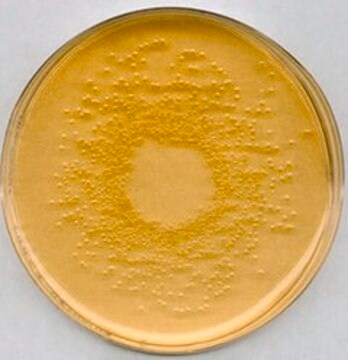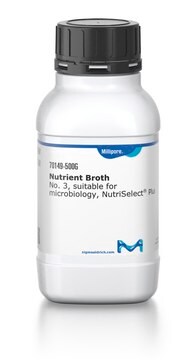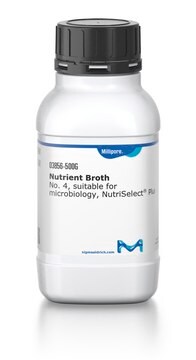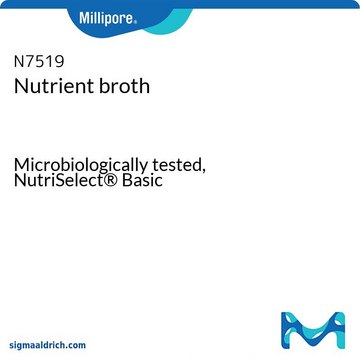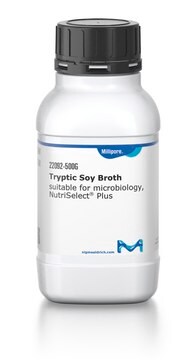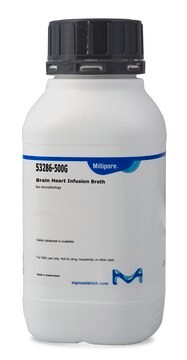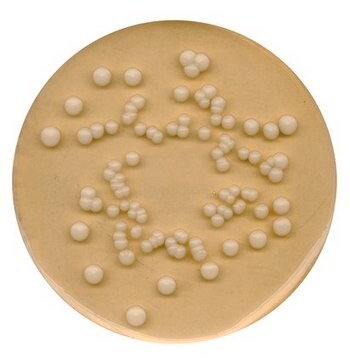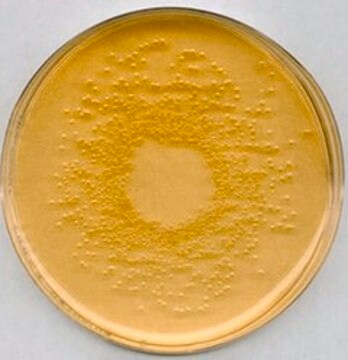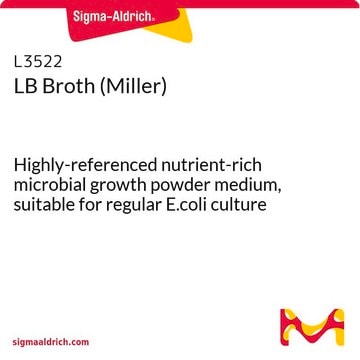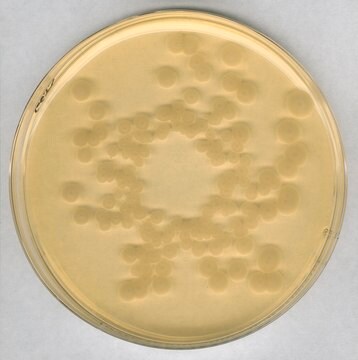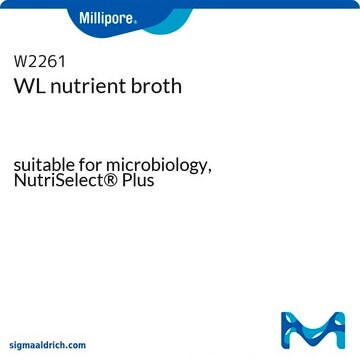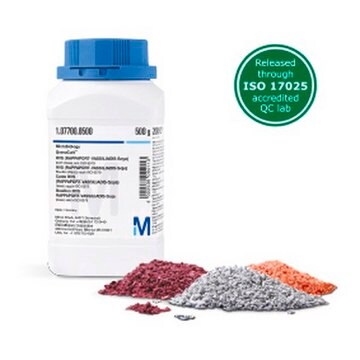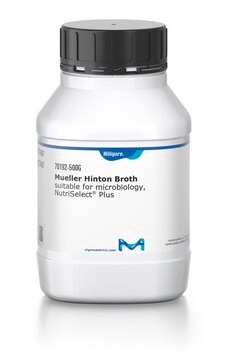70122
Nutrient Broth
Liquid medium used for the cultivation of a wide variety of microorganism, NutriSelect® Plus, suitable for microbiology
Sinonimo/i:
NB, standard nutrient broth, nutrient broth No.1, Standard - Nutrient Broth
About This Item
Prodotti consigliati
Livello qualitativo
Sterilità
non-sterile
Stato
powder
Durata
limited shelf life, expiry date on the label
Composizione
D(+)-glucose, 1 g/L
peptone, 15 g/L
sodium chloride, 6 g/L
yeast extract, 3 g/L
Produttore/marchio commerciale
NutriSelect® Plus
tecniche
microbiological culture: suitable
pH finale
7.5±0.2 (25 °C)
applicazioni
agriculture
bioburden testing
environmental
food and beverages
life science and biopharma
microbiology
Temperatura di conservazione
2-25°C
Compatibilità
Erysipelothrix spp.
nonselective for Brucella spp.
nonselective for Escherichia coli
nonselective for Listeria spp.
nonselective for Staphylococcus spp.
nonselective for Streptococcus spp.
nonselective for bacteria (General Media)
nonselective for coliforms
Cerchi prodotti simili? Visita Guida al confronto tra prodotti
Categorie correlate
Descrizione generale
Nutrient Broth is a general-purpose fluid media containing yeast extract, peptone, sodium chloride and other basic nutritional requirements for the growth of a wide variety of microbes that don’t require specific nutrients. It is used in the routine cultivation of microorganisms from both clinical and non-clinical samples. Addition of different biological fluids like blood, serum, egg yolk etc. can make it suitable for cultivation of more fastidious microbes.
Applicazioni
•Nutrient Broth No. 1 is used for the routine cultivation of microorganisms not requiring specific nutritional requirements
•It is also used for the enumeration and enrichment of bacteria.
•Nutrient Broth No 1 can be used as a base for preparing special culture media.
Nota sulla preparazione
Nota a piè di pagina
The designations basic, plus, or prime are added to indicate the quality control level, from basic quality control to standard QC plus to prime for full regulatory compliance.
Note legali
Codice della classe di stoccaggio
11 - Combustible Solids
Classe di pericolosità dell'acqua (WGK)
WGK 3
Punto d’infiammabilità (°F)
Not applicable
Punto d’infiammabilità (°C)
Not applicable
Scegli una delle versioni più recenti:
Possiedi già questo prodotto?
I documenti relativi ai prodotti acquistati recentemente sono disponibili nell’Archivio dei documenti.
I clienti hanno visto anche
Articoli
Streptococci- Overview of Detection, Identification, Differentiation and Cultivation Techniques
Il team dei nostri ricercatori vanta grande esperienza in tutte le aree della ricerca quali Life Science, scienza dei materiali, sintesi chimica, cromatografia, discipline analitiche, ecc..
Contatta l'Assistenza Tecnica.